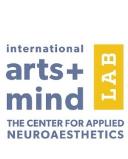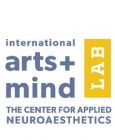Health
The Arts Are the Reset Button Students Need This School Year
How the arts can support student wellbeing during the back-to-school transition.
Posted September 16, 2021 Reviewed by Chloe Williams
Key points
- Mental health issues, caused or exacerbated by the pandemic, can create barriers to learning.
- Arts-based interventions are an effective way to engage students in their own healing and may help restore students' mental wellbeing.
- Making art can alleviate stress, increases mindfulness, and help people process experiences and feelings in a safe space, research shows.
Around this time last year, many parents, teachers, and students ventured into the great unknown—a year of remote or hybrid learning. We fretted about learning losses from the disruptive lockdowns of spring 2020 and the many challenges ahead for navigating virtual classrooms.
This year, as the U.S. attempts a return to in-person instruction amidst a surge of the highly contagious Delta variant, fears and concerns for students have multiplied and compounded. And our students are not the same.
“You can’t learn if you don’t feel safe. You can’t thrive if you are depressed or anxious,” says Susan Magsamen, executive director of the International Arts + Mind Lab at Johns Hopkins University School of Medicine.
But what if there were an accessible and affordable tool to help restore our students to a healthier emotional baseline? One that gives them a place to process their experiences during the pandemic and reconnect with themselves, their peers, and their teachers?
The arts are a powerful reset button for the brain and body. And they can be the key to restoring the mental wellbeing of our students in yet another unpredictable school year.
Are the Kids Alright?
A 2021 review of studies evaluating the mental health of children and adolescents during pandemics past and present outlines the risks for our collective student body as COVID-19 rages on.
“Although the number of children and adolescents affected by the disease is small, the disease and the containment measures such as social distancing, school closure, and isolation have negatively impacted the mental health and well-being of children and adolescents,” said the authors of the review. “The impact of COVID-19 on the mental health of children and adolescents is of great concern. Anxiety, depression, disturbances in sleep and appetite, as well as impairment in social interactions are the most common presentations.”
While painting a dire picture of COVID’s impact on youth, the same study also mentions that arts-based interventions, in addition to clinical mental health services, can help and are an effective way to engage children and adolescents in their own healing.
How the Arts Support Mental Wellbeing
A growing body of evidence shows that making art—painting or drawing, dancing or singing, poetry or journaling—is a smart way to build coping skills, manage emotions, relieve stress, and express oneself.
Many recent studies found that even the simple act of coloring, a mainstay of art therapy, reduces stress, alleviates test anxiety, increases mindfulness, and improves creative ideation in undergraduate students and schoolchildren.
Researchers hypothesize that some arts-based activities can induce a state of mindfulness, which is often linked with the practice of meditation. Mindfulness helps people focus their attention and develop an awareness of their present thoughts and feelings without judgment. With practice, it enables individuals to choose healthy responses to distressing situations, a key coping skill for practically everyone living in the modern world, especially during the time of COVID.
Much like meditation, the arts help re-direct one’s attention to the present moment and process personal experiences and feelings in a safe space. Arts-based interventions, including drawing, dance, spoken word, and expressive writing, have been used with youth refugees and survivors of natural disasters to mitigate trauma. One of the most powerful aspects of the arts is that they help us name the unnamable.
“It’s really through the process of creating art, whether it’s dance, music, theater, visual arts, even media arts...that students are able to express themselves. They’re able to get in touch with their emotions and their feelings, really in a way that they may not even be able to articulate. And this is especially true for our younger learners who may not even be able to form the words to express how they are feeling,” shared Ayanna Hudson, director of Arts Education at the National Endowment for the Arts, in a recent Art Works podcast.
That’s a pretty powerful tool for taking the emotional temperature of the classroom as we embark on a new school year. And a great way to reconnect with students who might seem emotionally remote, even when physically present.
Building Joy and Resilience in the Classroom
Most importantly, the arts can add a much-needed dose of joy to our students’ lives and help them build the resilience necessary to carry on and thrive in spite of the pandemic. They don’t even need to necessarily excel at making art to unlock its restorative powers. In this case, it’s truly about the journey, not the destination. A simple classroom exercise in coloring or journaling can be grounding for students and teachers alike.
As educators welcome students back into their care this year, they know that things have changed, and they’ll need to adapt lesson plans to make up for more than just learning losses. But where to start? Research shows that one of the best ways to support our students’ mental wellbeing might be through art.
References
Meherali, S., Punjani, N., Louie-Poon, S., Abdul Rahim, K., Das, J. K., Salam, R. A., & Lassi, Z. S. (2021). Mental Health of Children and Adolescents Amidst COVID-19 and Past Pandemics: A Rapid Systematic Review. International Journal of Environmental Research and Public Health, 18(7), 3432. MDPI AG. http://dx.doi.org/10.3390/ijerph18073432
Sandmire, D. A., Rankin, N. E., Gorham, S. R., Eggleston, D. T., French, C. A., Lodge, E. E., Kuns, G. C., & Grimm, D. R. (2016). Psychological and autonomic effects of art making in college-aged students. Anxiety, Stress & Coping: An International Journal, 29(5), 561–569. https://doi.org/10.1080/10615806.2015.1076798
Powell, C.B., Alcorn, C.B., & Lindsay, B.K. (2017). Effect of coloring on student stress levels. American journal of disaster medicine, 16, 9-16. https://doi.org/10.5055/ajrt.2017.0122
Carsley, D., & Heath, N. L. (2019). Evaluating the effectiveness of a mindfulness coloring activity for test anxiety in children. The Journal of Educational Research, 112(2), 143–151. https://doi.org/10.1080/00220671.2018.1448749
Brown, K. W., & Ryan, R. M. (2003). The benefits of being present: Mindfulness and its role in psychological well-being. Journal of Personality and Social Psychology, 84(4), 822–848. https://doi.org/10.1037/0022-3514.84.4.822
Coholic, D., Schwabe, N., & Lander, K. (2020). A scoping review of arts-based mindfulness interventions for children and youth. Child & Adolescent Social Work Journal. Advance online publication. https://doi.org/10.1007/s10560-020-00657-5


